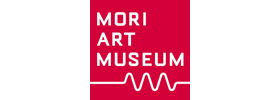
Follow me! Contemporary Chinese Art at the Threshold of the Millenium
CAO Fei » WENG Fen » YANG Fudong » Wang Qingsong » SHAO Yinong & MU Chen » SHI Yong » LIU Zheng » YANG Zhenzhong » & others
Exhibition: 2 Jul – 4 Sep 2005

Mori Art Museum
6-10-1 Roppongi, Minato-ku
106-6150 Tokyo
+81-3-57778600
Sun-Thu 10-22 . Fri, Sat 10-24

Contemporary China is characterized by an incredible dynamism. Things seem to be transformed everyday, fuelled by astonishing economic growth, frantic urban development and the preparations for the 2008 Olympics. Of course these changes are reflected in art. Throughout the 1990s Chinese artists slowly emerged into the international art world and were invited to take part in numerous exhibitions across the world. Now, at the threshold of the new millennium, interest in Chinese contemporary art is peaking again, as a new generation of artists - born in the late 1960s and 1970s - appears on the scene. This new generation presents us with an accurate and complex picture of a culture in transition. They take as their subject matter the country's disappearing traditional landscape, its new urbanism and rapidly changing social values. They are also concerned with the ways in which Chinese people are adapting their lifestyles to contemporary realities, freeing themselves from traditional stereotypes while actively utilizing new technologies. "Follow Me! Chinese Contemporary Art at the Threshold of the New Millennium" introduces over forty works by nineteen artists of this new generation. The title of the exhibition is taken from Wang Qingsong's photo-tableau "Follow Me," included in the show, which shows the artist as a teacher seated in front of a blackboard covered in Chinese and English writing on which the logos of famous American and European brands can be seen - a sideways comments perhaps on China's recent wave of privatizations and opening up to foreign markets. But the words at the center of the board - "Let China walks towards the world! Let the world learns about China!" - suggest that they should not slavishly follow the developed world. In fact, the artist seems to be asking who, in the future, will be doing the leading. In confronting the many faces of the new China there can no longer be any single point of view or message in the art. One thing is sure though, the influence of this country's artists is certain to grow in the future.

